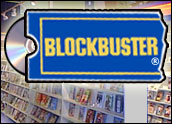
Dish Network is abandoning plans to develop Blockbuster into a streaming video service that would directly compete with Netflix, company founder and chairman Charlie Ergen said in an interview with Bloomberg.
Dish acquired the video rental chain for US$320 million in April of 2011, months after Blockbuster filed for bankruptcy. Later that year, Dish announced it would offer a bundled movie rental service with its pay TV service. At the same time, Dish revealed it was taking advantage of Blockbuster’s content provider relationships and working on developing a streaming service meant to rival Netflix.
An alternative plan for Blockbuster stores to sell electronic devices that would allow users to stream video content have stalled, as Dish waits for approval of a $3 billion spectrum deal.
It also shuttered and sold hundreds of Blockbuster stores in an attempt to gain from no-longer-profitable locations, in addition to expanding Blockbuster’s mobile and on-demand video options, although no single plan seems to have helped the once-dominant video rental store spring back to life.
Bad Business?
Dish might not have recognized all the challenges involved in developing a successful streaming service, Ergen admitted. The move to acquire Blockbuster wasn’t necessarily a mistake, but he doubted the decision would be “transformative.”
Because Netflix started nurturing relationships with content providers before the streaming business model was fully developed, Dish would have had a tough time at turning a profit from a streaming service, said Paul Sweeting, principal at Concurrent Media Strategies.
“The studios have long been leery of subscription-based streaming of movies because it produces the lowest per-view/per-capita return for the rights holder of any business model and it cannibalizes higher margin businesses like pay-per-view rentals and even purchases,” Sweeting told the E-Commerce Times. “So I was never optimistic that Dish would get the rights it would need to make a go of it.”
Dish didn’t necessarily waste the $320 million it spent on Blockbuster stores, Ergen said, noting that some of the remaining 900 Blockbuster stores, particularly those in rural areas, continue to turn a profit. Dish also still owns Blockbuster’s customer list, giving it a potential core base for a possible mail DVD movie rental subscription that could compete with Netflix, said Peter Koeppel, founder and president of Koeppel Direct.
But given the evolving nature of the digital content industry, that model might only be viable for another five years, said Koeppel, meaning Dish should continue to find out how best to use Blockbuster’s assets.
“Right now it appears that it didn’t make sense from an economic standpoint for Dish to offer a streaming service,” Koeppel told the E-Commerce Times. “I think they have considerable assets, so as technologies change, its possible Dish will come up with an approach that makes streaming more viable. In the meantime, they could try the mail subscription service or just wait for the right time to offer the streaming service.”
Future Plans
Dish is indeed looking into different options with its Blockbuster holdings, including a Web-based subscription service where customers could pick a few popular cable channels, Ergen said, although he admitted those plans could take years to materialize.
At this point, the company needs to explore different outlets for distributing content, said Sweeting.
“Dish’s best bet at this point is to continue to operate whatever number of Blockbuster stores still make sense, and otherwise use it as an electronic sell-through or VOD rental platform. It should also join UltraViolet and participate in the early digital sell-through windows the studios are beginning to experiment with,” he said.
Ultimately, though, the company shouldn’t completely abandon its streaming plans. As the network and digital content industries continue to merge, it is going to need some sort of streaming service to remain relevant, said Koeppel.
“I think that companies like Dish will need to offer streaming services in order to compete in the future,” he said. “So they need to figure out a way to cost effectively offer those services to consumers.”






















































Social Media
See all Social Media